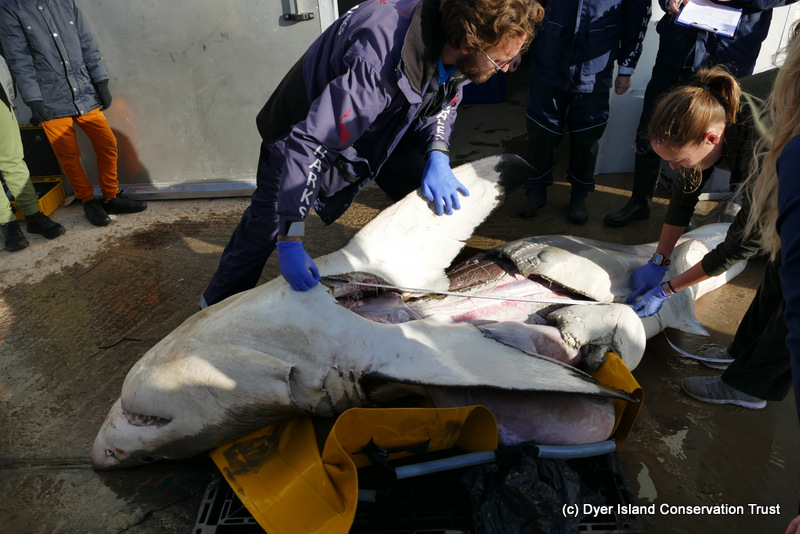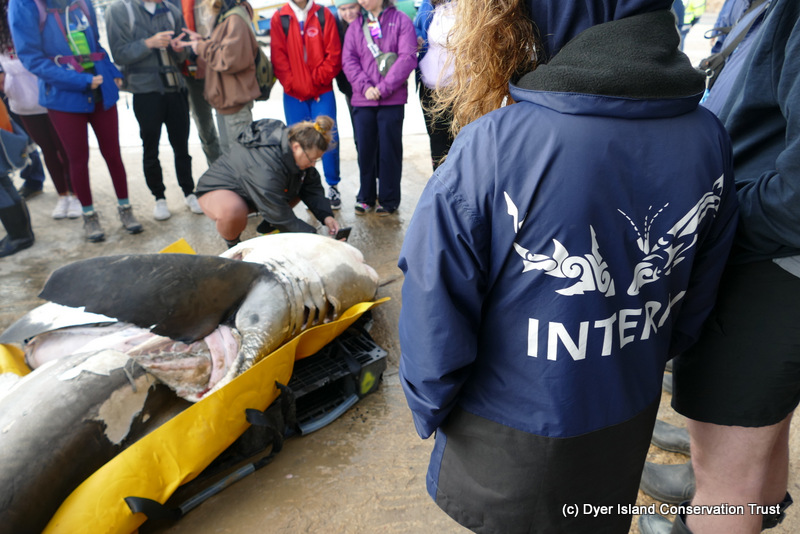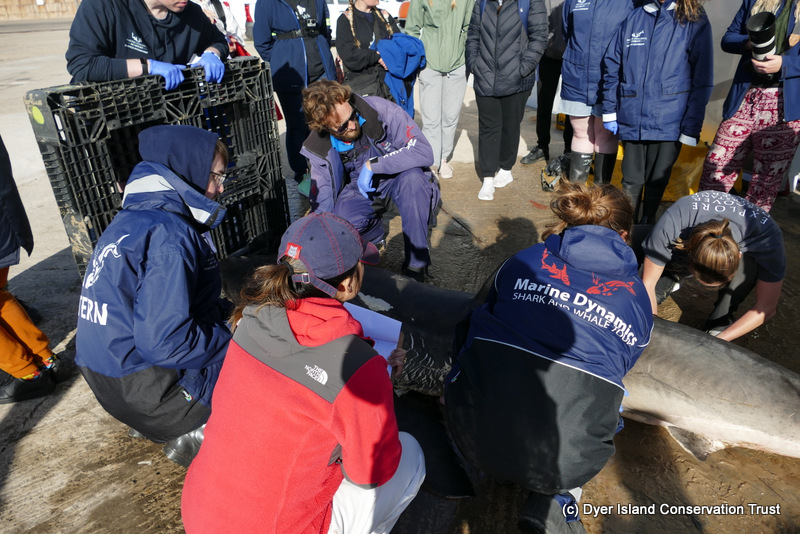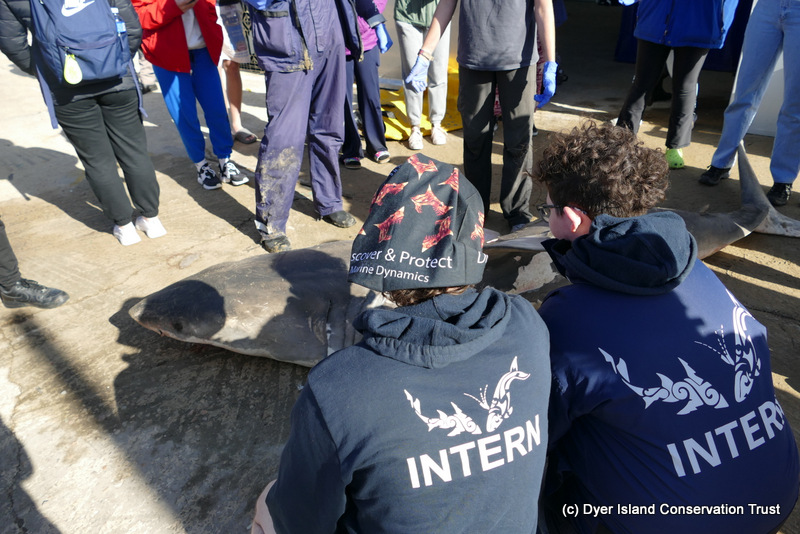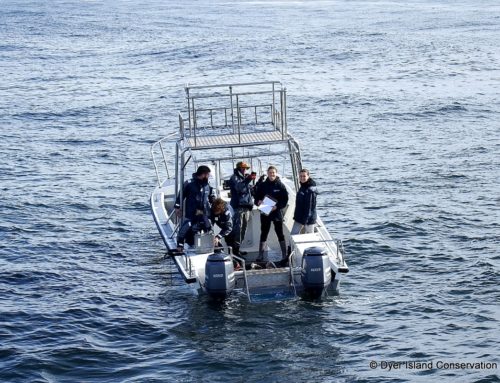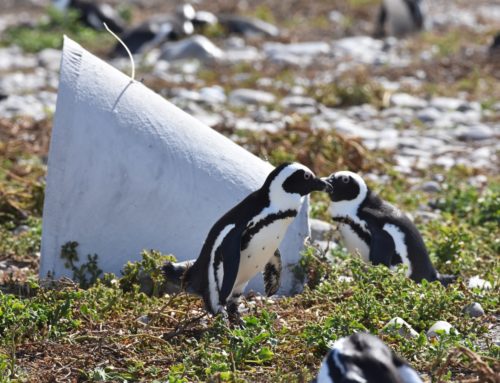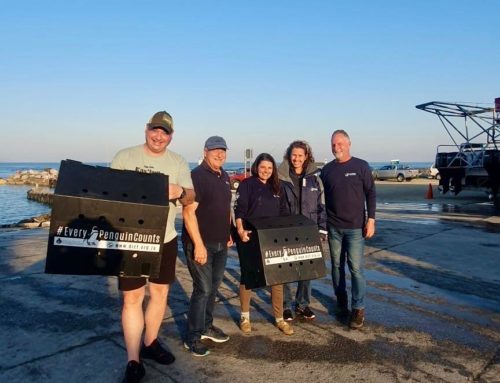On the 18th of June, notable observations were made in Mossel Bay as two distinct Orca individuals, Port and Starboard, were witnessed engaging in an encounter with a white shark, resulting in hunting behaviour. On the following day, the carcass of a white shark washed up on Hartenbos Beach. This individual was confirmed to be a different white shark from the one seen the prior day, by using dorsal identification.
To investigate the circumstances surrounding the deceased white shark, the Dyer Island Conservation Trust received an invitation from Oceans Research on the 20th of June to conduct a necropsy in Mossel Bay. The objective of this collaborative effort was to gather information and insights into the predator-prey dynamics associated with this event.
Upon examination, the necropsy team identified the deceased shark as a 3.5 meter female with evidence of Orca predation. The shark displayed multiple rake marks across its body, a large tear along the pectoral girdle and belly, and the absence of the liver and reproductive tracts. The team documented the predation marks, collected measurements, and obtained muscle samples and fin clippings. The necropsy was done with permission from the Department of Forestry, Fisheries and the Environment (DFFE). The shark’s jaws were removed and sent to the appropriate government authorities.
We extend our appreciation to Oceans Research for inviting us to participate in this research and to the staff and interns of the Marine Dynamics Academy, Oceans Research, Sea Search, and the Shark Research Unit for their assistance during the necropsy process.
*Please note that this blog may contain photos that can upset sensitive viewers.
